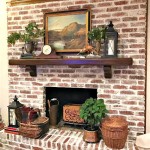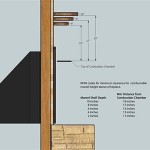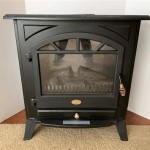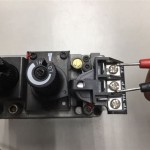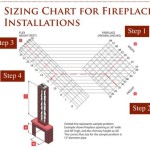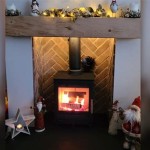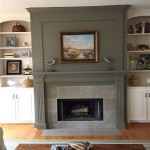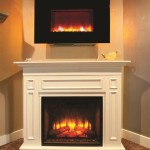Understanding Universal Fireplace Remotes: Functionality, Compatibility, and Usage
Universal fireplace remotes offer a convenient solution for controlling gas fireplaces, providing users with the ability to adjust flame height, turn the fireplace on or off, and in some cases, manage additional features like blowers or accent lighting. These remotes are designed to work with a variety of fireplace models and brands, offering a single point of control for appliances that may have previously required manual operation or a proprietary remote.
The concept behind a universal remote centers on its capacity to learn and replicate the signals emitted by original manufacturer remotes. This learning process, often referred to as "programming," allows the universal remote to send the correct commands to the receiver unit within the fireplace, thus enabling remote operation of the appliance's core functions. However, it's crucial to understand the nuances of compatibility and programming to ensure successful implementation.
This article provides a comprehensive overview of universal fireplace remotes, covering their functionality, compatibility considerations, programming methods, troubleshooting tips, and the benefits they offer in terms of convenience and safety. Understanding these aspects is essential for anyone considering replacing a lost or damaged remote, or for those seeking to upgrade their fireplace control options.
Key Considerations for Choosing a Universal Fireplace Remote
Selecting the appropriate universal fireplace remote requires careful consideration of several factors related to compatibility, functionality, and safety features. A mismatch between the remote's capabilities and the fireplace's operating system can result in either limited functionality or, in rare cases, potential safety hazards. Therefore, a thorough assessment of the fireplace's specifications and the remote's features is necessary before making a purchase.
First and foremost, it is imperative to determine the type of fireplace and its ignition system. Gas fireplaces typically employ either a standing pilot system or an electronic ignition system. Standing pilot systems maintain a small, continuously burning flame that ignites the main burner when needed. Electronic ignition systems, on the other hand, use an electric spark to ignite the gas flow. Universal remotes are often designed to work specifically with one type of ignition system or the other, and using a remote designed for an electronic ignition system with a standing pilot fireplace (or vice versa) may lead to malfunction or damage.
Secondly, it is important to understand the operating voltage and frequency of the fireplace's receiver unit. The receiver unit is the component within the fireplace that receives signals from the remote. Most gas fireplaces operate on either millivolt or 24-volt systems. The universal remote must be designed to work with the same voltage system as the fireplace. Similarly, the remote and receiver must operate on the same radio frequency (typically 304MHz or 433MHz). Mismatched frequencies will prevent the remote from communicating with the fireplace.
Thirdly, consider the desired functionality. Basic universal fireplace remotes typically offer on/off control and flame height adjustment. More advanced remotes may include features such as thermostat control, timer functions, blower control, and accent lighting control. Determine which of these features are important and select a remote that offers the desired level of functionality. Examining the original remote's capabilities can provide valuable insight into the features to prioritize in a replacement. Also, check the receiver unit on the fireplace, as it may support features not utilized by the original remote.
Finally, prioritizing safety features in the selection process is paramount. Look for remotes that include features such as child safety locks and automatic shut-off timers. A child safety lock prevents accidental operation of the fireplace, while an automatic shut-off timer will turn off the fireplace after a set period of time, even if the remote is not used. These features can help to prevent accidents and ensure safe operation of the fireplace.
Programming and Pairing a Universal Fireplace Remote
Programming a universal fireplace remote involves setting it up to communicate correctly with the fireplace's receiver unit. This process typically requires either the remote to learn the signal codes from an existing remote, or for the remote to be manually configured using a series of codes found in the remote's instruction manual. Understanding the specific programming method required for a particular remote is critical for successful operation.
The learning method, also known as "code learning," relies on the ability of the universal remote to capture and store the infrared or radio frequency signals emitted by the original remote. The steps involved in this process typically include placing the original remote and the universal remote close to each other, entering a programming mode on the universal remote, and then pressing the corresponding buttons on the original remote. The universal remote will then capture and store the signal code for each button. This method is particularly useful when the original remote is still functioning but is being replaced for convenience or due to damage.
Manual programming, on the other hand, involves selecting a code from a list provided in the remote's instruction manual that corresponds to the brand and model of the fireplace. This method requires the user to identify the fireplace manufacturer and model number and then consult the code list to find the appropriate code. The user then enters the code into the remote, typically using a series of button presses or a keypad. This method is useful when the original remote is lost or damaged, as it does not require a working original remote.
Regardless of the programming method used, it is important to follow the manufacturer's instructions carefully. Incorrect programming can result in the remote not functioning properly or, in some cases, causing damage to the fireplace. Before beginning the programming process, ensure that the batteries in both the remote and the fireplace receiver unit are fresh and properly installed. Also, make sure that there are no obstructions between the remote and the receiver unit, as this can interfere with the signal transmission.
Once the remote has been programmed, it is important to test its functionality thoroughly. Test all of the buttons on the remote to ensure that they are working properly and that they are controlling the correct functions on the fireplace. If any of the buttons are not working, repeat the programming process or consult the remote's troubleshooting guide.
Pairing may also be necessary, especially for remotes operating on radio frequency (RF). Pairing creates a unique link between the remote and the receiver, preventing interference from other nearby devices. The process typically involves pressing a button on the receiver unit and then pressing a specific button sequence on the remote within a defined timeframe. Refer to the remote's instructions for the exact pairing procedure.
Troubleshooting Common Issues with Universal Fireplace Remotes
Even with careful programming and setup, issues can arise with universal fireplace remotes. These issues can range from simple problems like weak batteries to more complex issues like signal interference or receiver malfunction. Understanding common troubleshooting steps can help to resolve these issues quickly and efficiently.
The most common issue is a lack of response from the fireplace when a button is pressed on the remote. The first step in troubleshooting this issue is to check the batteries in both the remote and the fireplace receiver unit. Weak batteries are a common cause of remote malfunction. Replace the batteries with fresh ones and test the remote again. Ensure the batteries are correctly oriented within the battery compartment.
If replacing the batteries does not resolve the issue, the next step is to check the programming of the remote. It is possible that the remote has become unprogrammed or that the program code is incorrect. Repeat the programming process as described in the remote's instruction manual. Pay close attention to the steps involved in the programming process and ensure that each step is followed correctly.
Signal interference can also cause issues with universal fireplace remotes. Radio frequency interference from other electronic devices can disrupt the signal transmission between the remote and the receiver. Try moving any potential sources of interference, such as cordless phones or Wi-Fi routers, away from the fireplace. Additionally, ensure that there are no obstructions between the remote and the receiver unit, such as furniture or walls.
If the remote is still not functioning properly after checking the batteries, programming, and signal interference, the issue may be with the fireplace receiver unit. The receiver unit may be damaged or malfunctioning. In this case, it is necessary to contact a qualified fireplace technician to diagnose and repair the receiver unit. Attempting to repair the receiver unit without proper training and experience can be dangerous and may void the fireplace's warranty.
Finally, consult the remote's troubleshooting guide for specific information about common issues and their solutions. The troubleshooting guide may provide additional tips and techniques for resolving issues that are specific to the particular remote model. If all else fails, contact the remote manufacturer or a qualified technician for assistance.
Regular maintenance, such as cleaning the remote and receiver unit and replacing batteries promptly, can help to prevent issues from arising in the first place. By following these troubleshooting tips, users can ensure that their universal fireplace remote functions properly and provides years of reliable service.
In addition to the above points, it is important to remember that some universal fireplace remotes may not be compatible with all gas fireplace models. Always consult the remote's compatibility list or contact the manufacturer to ensure that the remote is compatible with the specific fireplace before making a purchase. Using a remote that is not compatible with the fireplace can damage the fireplace or create a safety hazard.

Fireplace Thermostats Remote Controls Friendly Fires

Skytech Fireplace Remote Control Com

Skytech Universal Fan Kit Valve System Fireplace Remote Control Thermostat 61tm15 3301 Grainger

Skytech Universal Fan Kit Valve System Fireplace Remote Control 61tm16 1001 A Grainger

Prominence Home 60x19 Electric Remote Controlled Led Wall Mount Fireplace With Adjustable Heat And Brightness Settings Com

Robertshaw S 55643

Napoleon F60 On Off Fireplace Remote Control With Thermostat

55643 Robertshaw Universal Fireplace Manual Remote Control Kit With Temperature Display Amre Supply

Cambridge Sanoma 72 In Electric Fireplace With Enhanced Log Display Multi Color Flames And Remote Blue Cam7233 1sbllg3 The Home Depot
Remotes Master For Replacement Fire Stove Remote Controls Electronics Manufacturer

